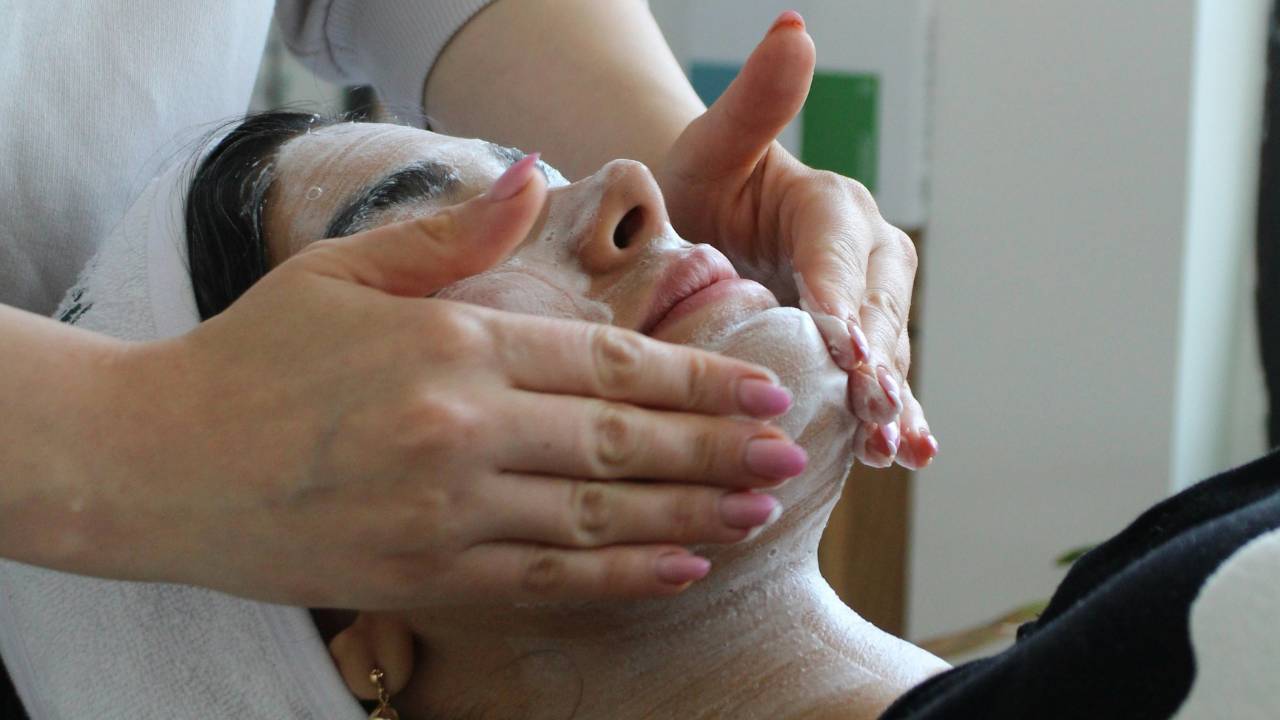




-
20 Views 0 Comments 0 Likes

Setting up a beauty enterprise involves not just passion for the industry but also a keen ability to manage finances effectively. Many entrepreneurs in the beauty sector overlook the importance of a sturdy financial foundation, risking early challenges as a result. Establishing a strong financial base ensures the enterprise can thrive in a competitive market.
Identifying key financial components - including budgeting, cost management, and revenue forecasting - forms the foundation for sustainable growth. Each of these elements plays a critical role in shaping a beauty business that can weather financial uncertainties. This groundwork allows beauty entrepreneurs to focus on creativity and innovation without financial strain.
Accumulating initial capital and managing cash flow are essential steps in launching a beauty enterprise. By securing diverse funding options and maintaining efficient cash management practices, business owners can support operations and pursue growth opportunities. This comprehensive approach ensures their beauty endeavour not only survives but flourishes.
Establishing a firm financial foundation for a beauty enterprise starts with crafting a detailed and effective business plan. Key components include a clear executive summary, in-depth market analysis, comprehensive product and service outlines, precise financial projections, and a well-defined operational structure.
A strategic business plan begins with a compelling executive summary. It succinctly outlines the core objectives of the beauty enterprise, providing a clear snapshot of the business model and strategic direction. The executive summary should also contain a vision statement that encapsulates the enterprise's aspirations within the beauty industry, engaging potential investors and partners. This succinct overview sets the tone and direction for the entire plan.
Market research is crucial for identifying target demographics and understanding the competitive landscape within the beauty industry. By gathering data on industry trends, consumer preferences, and competitor offerings, a business can tailor its product and service strategies effectively. Identifying market gaps and opportunities enables the company to position itself uniquely and caters to unmet consumer demands, enhancing its market proposition and potential success.
Clearly defining the range of products and services offered is essential. This includes detailing cosmetic lines, treatments, or beauty solutions the enterprise plans to provide. Consider elements such as unique selling points, quality standards, and pricing strategies. A well-structured outline helps in communicating how the enterprise meets customer needs, differentiates itself from competitors, and complements the overall business model.
Accurate financial projections are vital for assessing the enterprise's viability and financial health. This involves estimating revenue, costs, and profitability over a defined period. Collaborating with firms like Opes Financial Planning can assist in aligning financial goals with realistic forecasts. Additionally, outlining funding requirements, potential sources of investment, and financial strategies ensures that the enterprise is well-prepared to support its growth and operational ambitions.
A robust business plan must include a clear operational structure and business model. This encompasses organisational hierarchy, key roles, and responsibilities, ensuring efficient operations. The business model should outline how the company generates revenue, maintains sustainability, and achieves its strategic objectives. Detailing these elements provides a roadmap for operational management, aiding in the smooth execution of day-to-day activities and long-term business goals.
Understanding your target market is crucial for building a successful beauty enterprise. This involves examining market trends, customer segments, and competitors to tailor your offerings effectively.
Market analysis involves collecting and interpreting data to market effectively. Key factors include the size, growth rate, and trends within the beauty industry. Analysing demographics such as age, gender, income level, and location can help identify potential customers.
For instance, if a brand targets millennials, understanding their purchasing habits and beauty preferences is essential. Identifying trends such as rising interest in sustainable products or specific beauty techniques can offer insights into potential demand.
Evaluating these factors helps in determining the viability of new products and crafting marketing strategies that resonate with targeted demographics.
Customer segmentation involves dividing a broad consumer base into sub-groups with similar characteristics. These segments can be based on demographics, psychographics, behavioural traits, or geographics. By identifying these segments, a beauty enterprise can tailor its marketing efforts and product offerings to better satisfy specific needs.
Psychographic segmentation, which considers lifestyle, values, and personality, is increasingly valuable in the beauty industry, where individual expression and personal care are paramount.
Assessing behavioural trends, such as purchasing frequency or brand loyalty, provides additional layers of insight, allowing brands to create more personalised, meaningful interactions with their consumers.
A thorough analysis of competitors is crucial for carving out a niche in the beauty market. This involves identifying key players, understanding their strengths, weaknesses, and market positions. It also includes recognising gaps in the market that can be leveraged.
In gathering this information, one gains insight into pricing strategies, product offerings, and customer service models. Understanding what competitors are doing well, as well as their shortcomings, aids in developing competitive strategies.
Additionally, recognising industry trends and consumer reactions to competitor initiatives can provide guidance for innovation, helping your brand stay ahead in a dynamic market environment.
Focusing on strategic marketing and advertising is essential for a beauty enterprise to reach its target customers. This involves developing a detailed marketing plan, employing effective pricing strategies and promotions, and establishing a strong online presence through beauty blogging, all crucial components to engage the customer base effectively.
Crafting a detailed marketing plan involves clearly identifying target customers and understanding their preferences. This plan should outline specific marketing strategies to attract and retain the customer base. It may include traditional advertising channels alongside digital marketing efforts. Analysing competitor strategies and industry trends is essential to position the beauty enterprise uniquely in the market. Regularly revising the marketing strategy ensures it remains aligned with changing consumer behaviour and market conditions.
Effective pricing strategies play a critical role in attracting and retaining customers. Understanding the price sensitivity of the target audience helps in setting competitive and appealing prices. Promotions such as seasonal sales, loyalty programmes, and bundle offers can boost customer engagement and increase sales. It's important to balance promotions to avoid diminishing the perceived value of products. Strategically timed discounts can stimulate demand without harming long-term profitability.
Developing an online presence through social media platforms and an engaging website is vital for modern beauty enterprises. It allows direct interaction with potential customers and provides an avenue for sharing the latest product news and beauty tips. Starting a beauty blog can effectively enhance credibility, offering expert advice, tutorials, and reviews that resonate with the audience. Social media influencers can be leveraged to expand reach and build community trust, further solidifying the brand's authority in the beauty industry.
Opening a beauty enterprise requires careful planning and strategic decisions. Focus on the optimal location, efficient salon layout, necessary licenses, and a reliable supply chain to ensure long-term success.
Selecting the ideal location for a beauty salon is crucial. Accessibility and visibility play significant roles in attracting clients. A spot near busy streets, shopping centres, or residential areas can boost foot traffic. Consider local competition and pick a place that aligns with your target market. Adequate parking and public transport access also enhance customer convenience.
In urban areas, rent and utilities may be higher, but the potential customer base could justify the expense. For those focusing on specialisation, an area known for luxury beauty services or a high-end atmosphere could be beneficial. Analysing the demographics and income levels in the area helps ensure your services meet the community’s needs.
A well-designed salon efficiently uses space and enhances client experience. Invest in ergonomic salon equipment that suits your beauty specialisation, whether hair, skin care, or nails. The layout should promote smooth workflow and ease for staff, including makeup artists and estheticians, to deliver quality services.
Cosmetic packaging reflects the salon's brand identity and affects customer perception. Choose packaging materials that ensure product safety while aligning with your brand's aesthetic and ethical values, such as sustainability. Highlight your cosmetic brand in the salon’s display and interior design, reinforcing brand awareness and attracting attention.
Operating a beauty enterprise legally requires acquiring appropriate business licences and permits. Salon owners must adhere to local regulations, which may vary by region. Common requirements include health and safety compliance, professional certifications for staff, and, in some cases, environment-related permissions.
Ensuring compliance is not just about avoiding fines; it builds trust with clients who value safe and legal operations. Additionally, keeping licenses up-to-date supports business credibility, attracting both customers and potential partners. Regularly reviewing regulatory changes ensures ongoing compliance and smooth business operations.
Establishing a reliable supply chain is crucial for maintaining operations. Building relationships with reputable suppliers ensures a steady flow of quality salon supplies and inventory. For beauty salons, this includes everything from skincare products to salon furniture and tools.
Consider negotiating bulk purchase agreements or securing discounts for regular orders. Collaborate with distributors who offer support and advice on product trends and market demand. Careful management of stock levels prevents overordering and reduces costs related to excess inventory while ensuring there is no interruption in the services provided.
Managing financial resources effectively is essential for the sustainable growth of a beauty enterprise. Key areas include mastering cash flow management, securing financial support through loans, and accurately forecasting revenue and pricing to ensure business stability and growth.
Accurate cash flow management is crucial for maintaining a steady financial footing. Beauty businesses must track incoming and outgoing cash to avoid shortfalls. Operating costs, including rent, utilities, and wages, should be meticulously controlled and reviewed regularly. Start-up expenses might be high initially, but identifying areas of cost reduction can help improve cash flow over time.
Regularly reviewing financial statements gives insights into spending patterns and helps in making informed decisions. Effective cash flow management involves ensuring that cash inflows sync with outflows, thus reducing the risk of operating on a deficit.
Securing financial support is often necessary for growth. Business loans can provide much-needed capital for expansion, marketing, and procurement of inventory or equipment. Beauty business loans are tailored to meet the specific needs of the industry, but interest rates and collateral requirements must be carefully considered.
Working capital loans can help manage day-to-day operations. Establishing relationships with financial institutions opens potential avenues for securing favourable terms. Equipment financing might be essential for upgrading tools and machinery, pivotal in maintaining service quality and customer satisfaction. Analysing the terms and selecting the right financial product is vital for sustainable progress.
Pricing strategies significantly impact revenue. Setting the average price for services and products requires understanding market trends and consumer behaviour. An accurate financial forecast helps predict future revenues, allowing the business to adjust pricing and services accordingly.
Consistent review and adjustment of pricing models can lead to healthier profit margins. Identifying high-demand services and potential growth areas guides the allocation of resources, facilitating steady business growth. Using data from past performance and market analysis, businesses can project sales patterns and develop strategies to increase profitability.
A solid financial foundation is key to the success of beauty enterprises.
Careful budgeting and engaging financial professionals aid in resource allocation and navigating tax complexities. Diversifying revenue streams and embracing innovation bolster stability and profitability. Regular reviews of business strategies help identify growth opportunities and mitigate risks. Consistent financial management ensures long-term viability, while ongoing education keeps enterprises competitive.
By equipping themselves with the right tools and knowledge, beauty businesses can navigate their financial challenges effectively and secure their place in the market.
beauty Beauty Tips business insights fashion business Financial Stability Beauty Salons marketing advertising budgeting cash flow


